In Tuscany the snow is pink in the ApenninesSo, is it, as the article's translation seems to suggest, something to do with atmospheric dust? Or could there be another phenomenon at play here?
A pink blanket, like the sand of an exotic beach. It is the snow that has fallen in the past few hours on the Tuscan-Emilian Apennines, thanks to the micro-powders that are suspended in the atmosphere [from the] African currents.
To immortalize the phenomenon Tommaso D'Errico, a 35-year-old Roman who, together with his partner Alessia, left the capital to live in Valle Maira, in the Cuneo Alps, and now in the hamlet of Rofelle, Badia Tedalda (Arezzo). The couple is the author of the book '' A rhythm delle stagioni. A year of life in the mountains '', where he tells the unceasing discovery of life in the mountains, between total immersion in nature and the distance from the city. In their blog the two share daily adventures and secrets to survive at high altitude.
According to Scientific American some initially thought pink snow was because of meteorite dust, but on testing it in a laboratory it was discovered to be a photosynthetic algae:
When an 1818 British expedition led by Captain John Ross tasked with finding the Northwest Passage stumbled onto "extensive patches" of this stuff near Greenland's Cape York in Baffin Bay, the Times of London confidently declared it to be iron-nickel meteorite detritus. In reality, the Scottish botanist Robert Brown -- he of Brownian motion fame -- suggested in an appendix to Ross's mission report that same year the color could be due to an alga, a photosynthetic microbe. And it was.Snow tinted in various colours have been in the news recently; has it always been the case that sometimes snow just glows in various delightful rainbow colours? Are we seeing an increase in sightings? Are they all due to the same cause?
If there's one thing Earth has taught us, it's that if a surface or substrate is ever wet, something will grow. And, despite near-zero temperatures, acidity, solar irradiation, and what must be frankly admitted to be minimal nutritional value, snow is no exception. Over 60 species of algae alone dwell there, and no doubt more await discovery. Scientists just announced this May the discovery of a new species from Colorado snow that they suggest could be a source of biofuel feedstock for northern climates where other algae cannot thrive.
By far, the most common species of snow alga is Chlamydomonas nivalis, which colors snow red or pink. With their pair of front-mounted flagella, they ply the films of water found in melting snow drifts. Midsummer is the best time of the year to see them, if you live in a high-altitude or Arctic clime with snowbanks that stubbornly refuse to yield to the sun.
[...]Here's another example with a pinker hue, from further out.© Creative Commons Ökologix.Translated German caption: "Snow area with Chlamydomonas nivalis (snow blood) near Abisko (Northern Sweden)"
Here's a poorer example that I stumbled on myself on July 4, 2011 on Long's Peak in Colorado:
- Mysterious blue snow falls in St. Petersburg, Russia
- Mystery blue snow fallout in Chelyabinsk alarms residents
- Southern Russia overwhelmed with purple snow
See also:
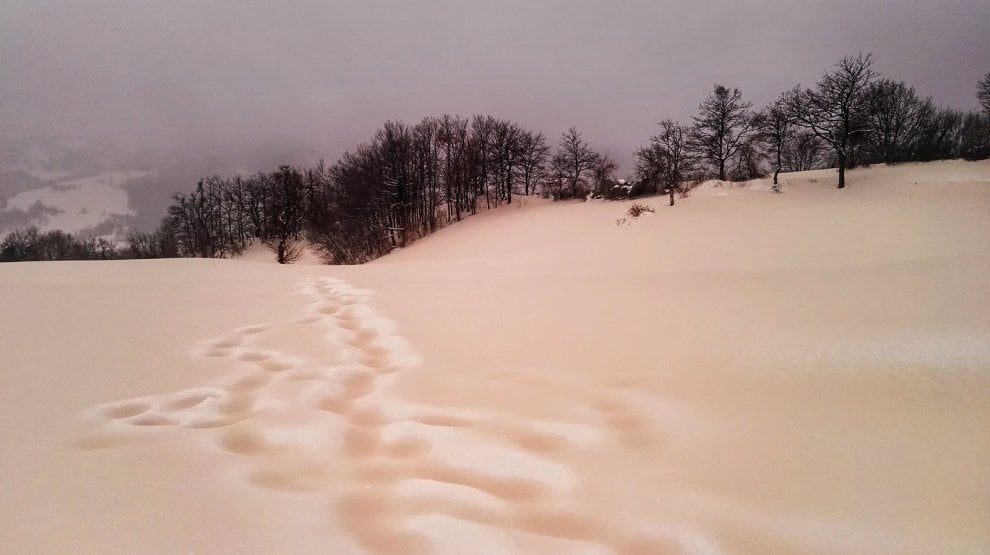
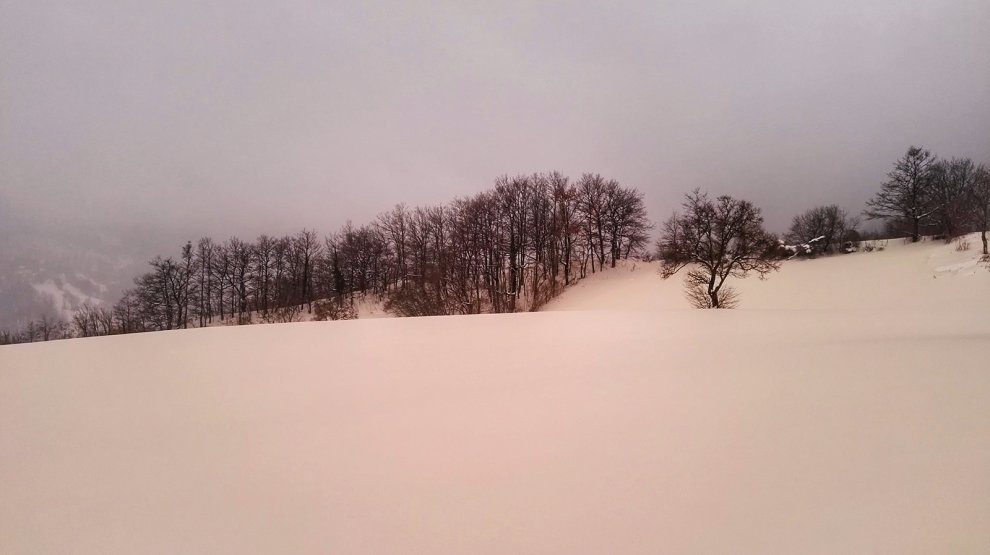
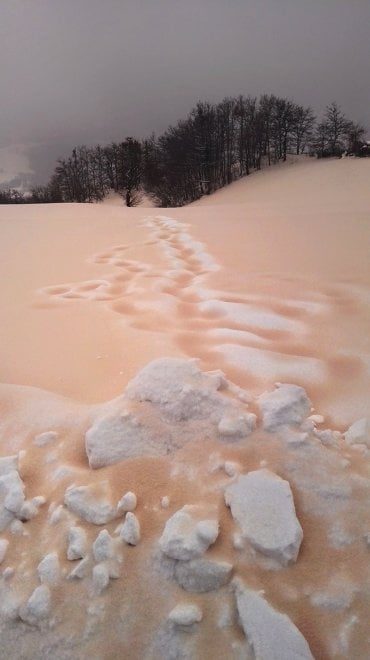
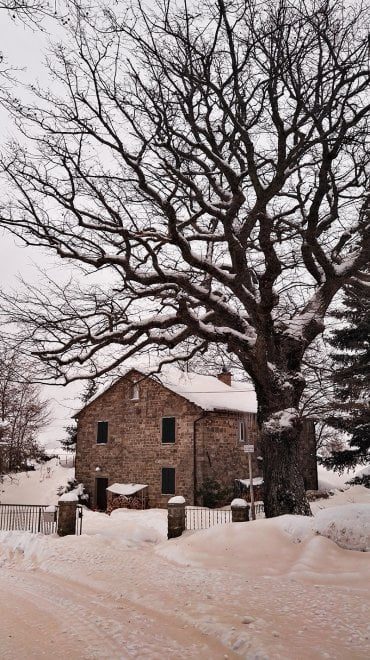
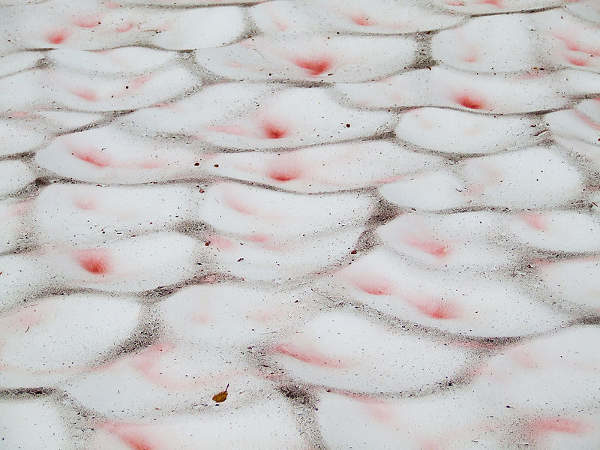
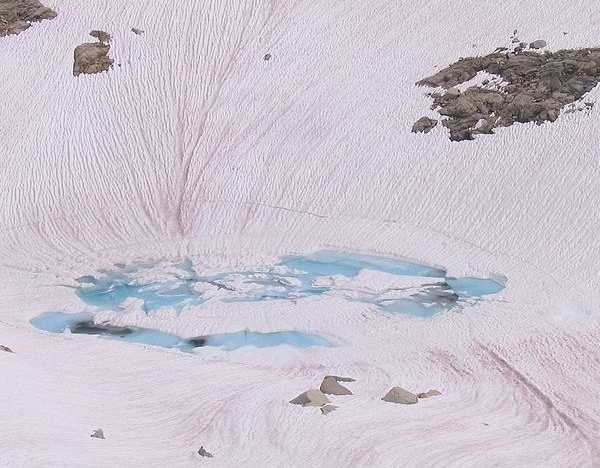
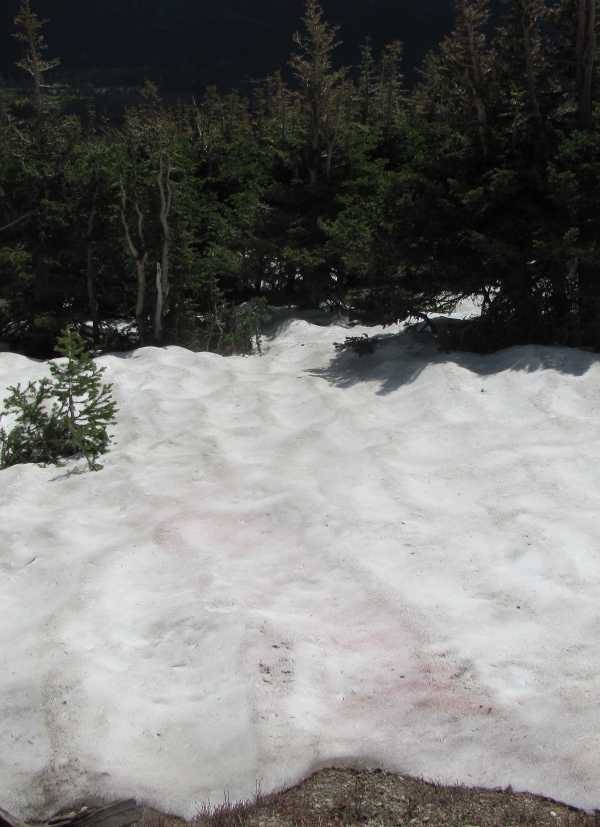



Reader Comments